Ever look in the mirror and think, “Man, I wish I could do muscle building and weight loss at the same time?”
You’re not alone! This is a common goal, and the good news is, it’s absolutely achievable.
But it’s not about magic pills or fad diets. It’s about strategic eating that fuels your body for both muscle building and weight loss.
This article is your guide to becoming a sculpting superhero in the kitchen. We’ll answer all your burning questions:
- What kind of food should I be eating?
- Are there foods I should avoid?
- How many calories should I consume?
- What should I eat before and after workouts?
- What are some common mistakes to watch out for?
By the end, you’ll have the knowledge to create a personalized eating plan that gets you closer to your dream physique.
Optimizing Food Choices for Muscle Building and Weight Loss
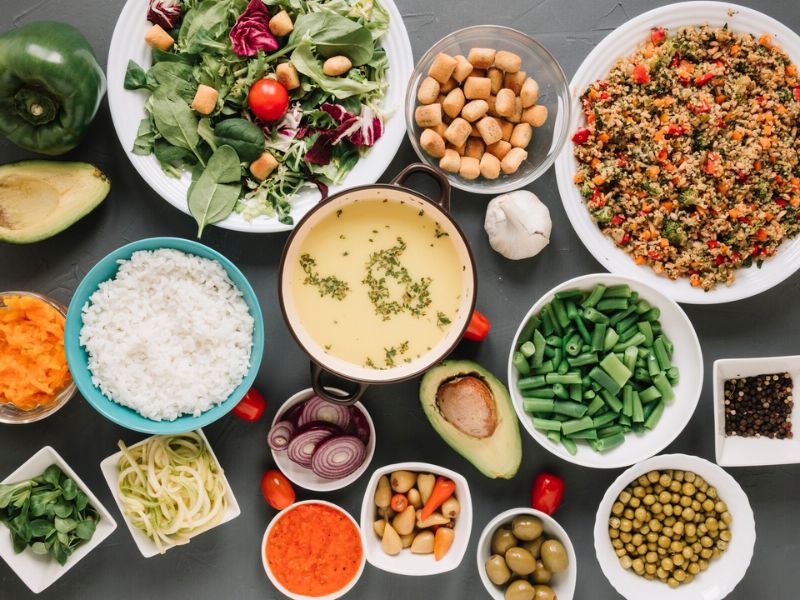
When it comes to fueling your body for both muscle building and weight loss, the quality of your food choices is paramount. Emphasize on:
Lean Proteins sources:
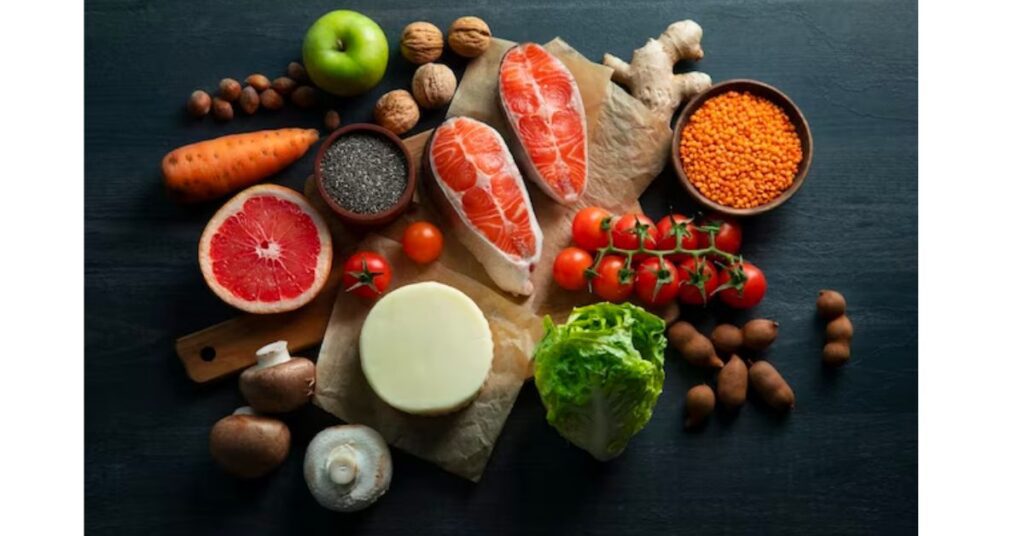
The building blocks of muscle.
- Chicken breast
- Turkey
- Fish (salmon, tuna, trout)
- Lean cuts of beef or pork
- Eggs (especially egg whites)
- Greek yogurt
- Cottage cheese
- Tofu
- Lentils
- Beans (black beans, chickpeas)
Colorful Fruits and Vegetables:
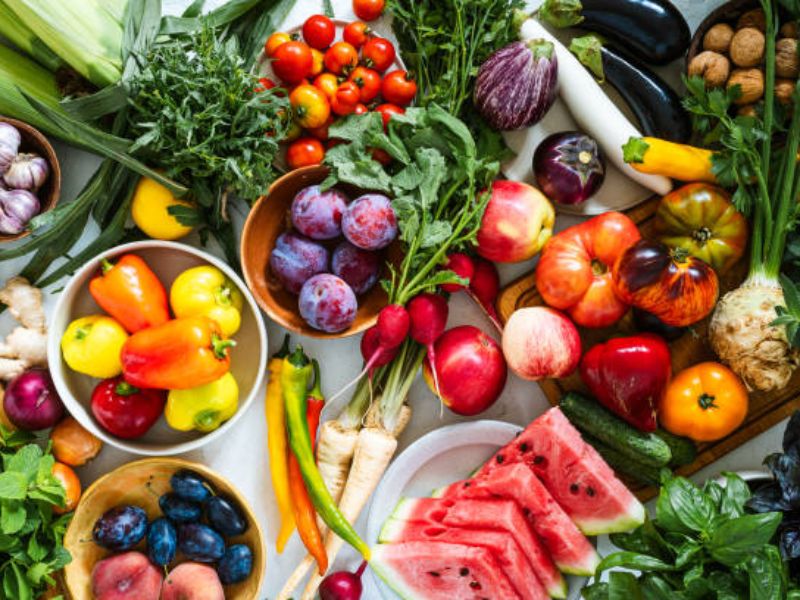
Packed with vitamins, minerals, and fiber, these support overall health and recovery.
- Berries (strawberries, blueberries, raspberries)
- Leafy greens (spinach, kale, Swiss chard)
- Cruciferous vegetables (broccoli, cauliflower, Brussels sprouts)
- Bell peppers
- Tomatoes
- Carrots
- Sweet potatoes
- Squash (butternut squash, acorn squash)
- Citrus fruits (oranges, grapefruits)
Whole Grains and Complex Carbohydrates:
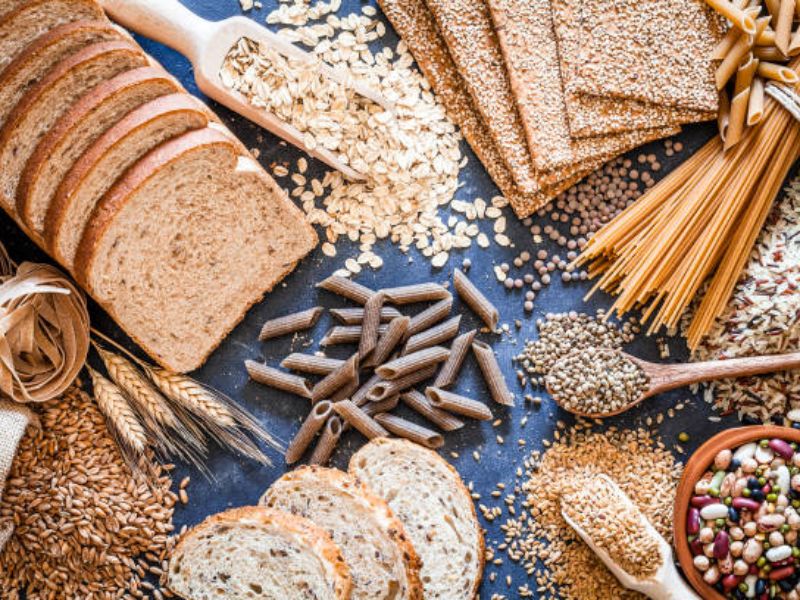
These provide sustained energy.
- Brown rice
- Quinoa
- Oats
- Barley
- Whole wheat pasta
- Whole grain bread
- Buckwheat
- Farro
- Bulgur
- Millet
Healthy Fats:
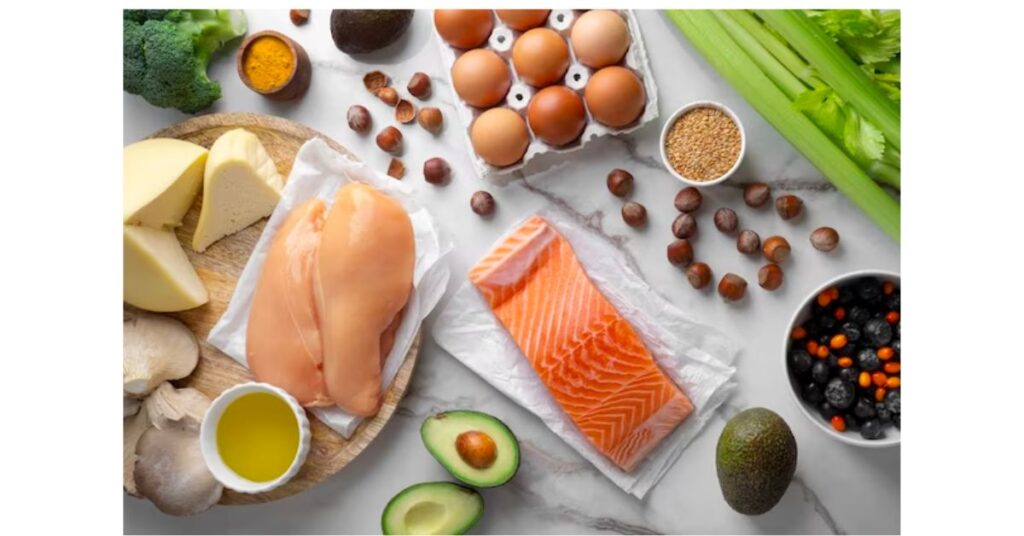
These provide a variety of nutrients your body needs to function at its best.
- Avocado
- Nuts (almonds, walnuts, cashews)
- Seeds (chia seeds, flaxseeds, pumpkin seeds)
- Olive oil
- Coconut oil
- Fatty fish (salmon, mackerel, sardines)
- Nut butters (peanut butter, almond butter)
Dairy and Dairy Alternatives:
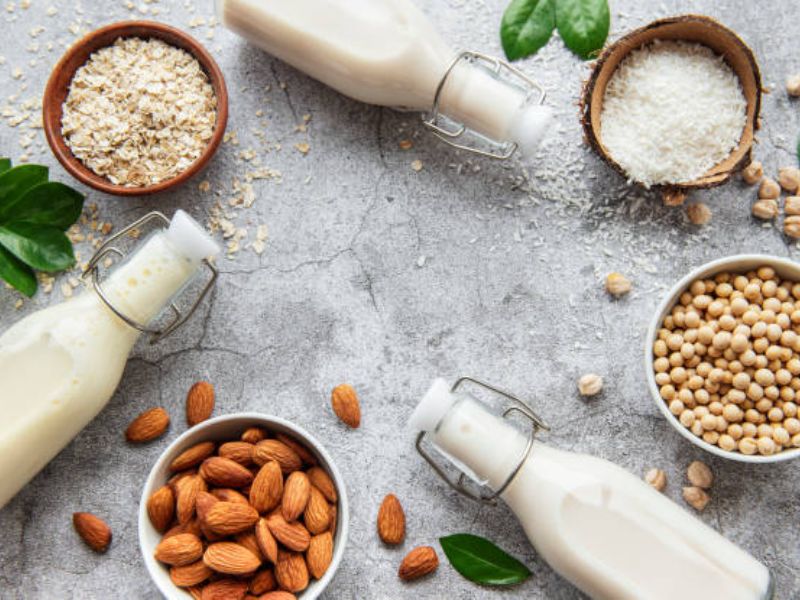
- Greek yogurt
- Cottage cheese
- Milk (dairy or plant-based)
- Cheese (in moderation)
- Almond milk
- Soy milk
- Coconut yogurt
Hydration:
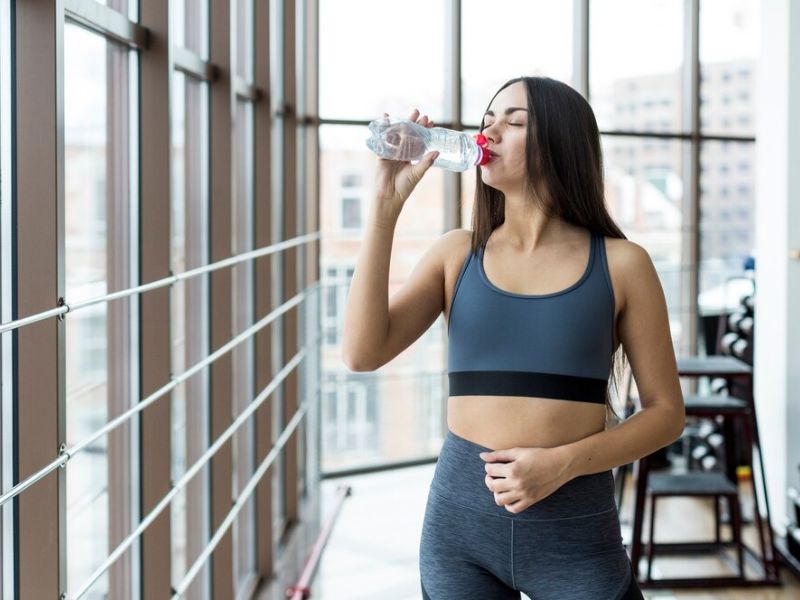
- Water (plain or infused with fruits and herbs)
- Herbal teas
- Sparkling water (unsweetened)
- Coconut water (natural, no added sugar)
When aiming to muscle building and weight loss simultaneously, it’s important to be mindful of your food choices and exclude items that may hinder your progress.
Here’s a list of foods to Exclude from your diet:
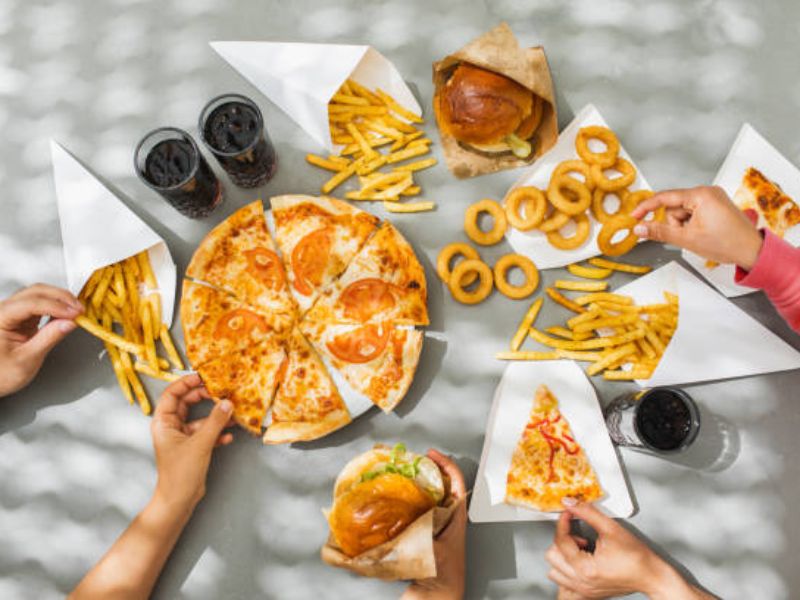
- Processed Foods: Avoid highly processed foods that are often high in added sugars, unhealthy fats, and preservatives. This includes items like packaged snacks, sugary cereals, and convenience meals.
- Sugary Beverages: Cut back on sugary drinks such as soda, fruit juices, and sweetened coffee drinks, as these can contribute excess calories without providing essential nutrients.
- Fried Foods: Minimize your intake of fried foods like French fries, fried chicken, and fried appetizers, as they are typically high in unhealthy fats and calories.
- Refined Carbohydrates: Reduce consumption of refined carbohydrates such as white bread, white rice, and sugary cereals, which can cause spikes in blood sugar levels and lead to weight gain.
- Sugary Treats: Limit consumption of sugary treats like candy, pastries, and desserts, as they can quickly add up in calories and provide little nutritional value.
- Alcohol: While an occasional drink in moderation is fine, excessive alcohol consumption can interfere with your weight loss and muscle-building goals due to its high calorie content and potential impact on metabolism.
- High-Calorie Snacks: Be cautious of calorie-dense snacks like chips, cookies, and chocolate bars, which can contribute to weight gain if consumed in excess.
Calorie Adjustment for Dual Goals
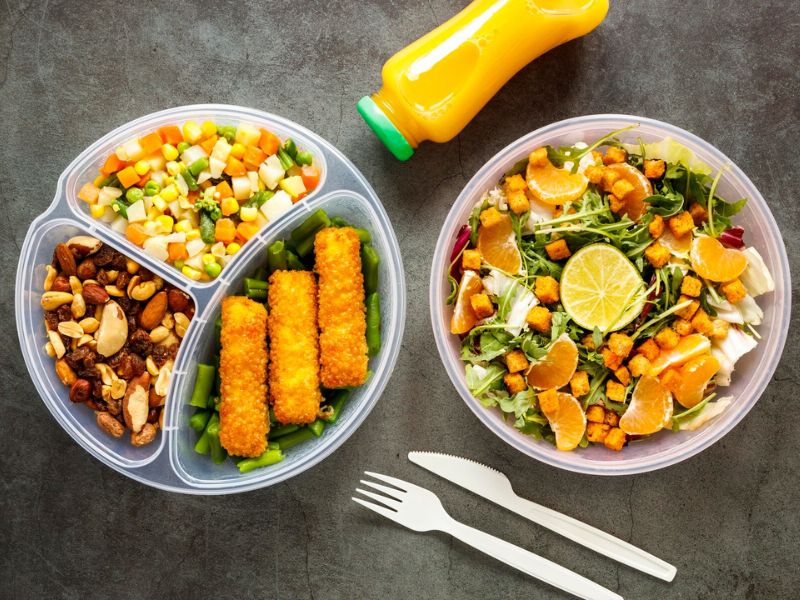
Balancing calorie intake is key when aiming to build muscle and lose weight simultaneously.
Calculate your Total Daily Energy Expenditure (TDEE) to determine the number of calories your body needs to maintain its current weight.
From there, you can adjust your calorie intake based on your specific goals.
To support muscle growth, aim for a slight surplus of calories, while incorporating a slight deficit to promote fat loss.
Finding the right balance may require some experimentation, so be patient and monitor your progress closely.
In addition to overall calorie intake, pay attention to your macronutrient distribution.
While there’s no one-size-fits-all approach, a general guideline is to consume a higher proportion of protein to support muscle repair and growth, along with a balance of healthy carbohydrates and fats to provide sustained energy and support metabolic function.
For optimal muscle building and fat loss, consider this macro ratio as a guideline:
- Protein: 25-35% of total calories (helps build and repair muscle)
- Carbs: 40-50% of total calories (provides energy for workouts)
- Fat: 20-30% of total calories (supports hormone function and satiety)
Pre- and Post-Workout Nutrition for Maximum Results
Pre- and Post-Workout Nutrition for Maximum Results Optimizing your pre- and post-workout nutrition can significantly impact your ability to build muscle and lose fat effectively.
Pre-workout, fuel up with a balanced meal containing a combination of carbohydrates and protein to provide energy and support muscle function.
Post-workout, prioritize protein-rich foods to facilitate muscle recovery and repair, paired with carbohydrates to replenish glycogen stores and support recovery.
Pre-Workout (Light Meals):

- Banana: Consuming a banana 30-60 minutes before your workout can provide a quick source of carbohydrates for energy.
- Fruit Smoothie: Blend together fruits like berries, banana, and yogurt for a light and refreshing pre-workout snack.
- Sprouts Chaat: A mix of sprouted lentils with chopped vegetables like tomatoes, onions, and a squeeze of lemon juice makes for a nutritious and energizing snack.
- Whole Grain Toast with Peanut Butter: Opt for whole grain bread spread with peanut butter for a combination of complex carbohydrates and protein to fuel your workout.
- Magic Oats: Soak 100gms oats for 2-3 hours, add a spoonful of peanut butter with coco powder (unsweetened), 1-2 spoons of honey and lastly some dry fruits for taste.
Post-Workout (Heavier Meal):
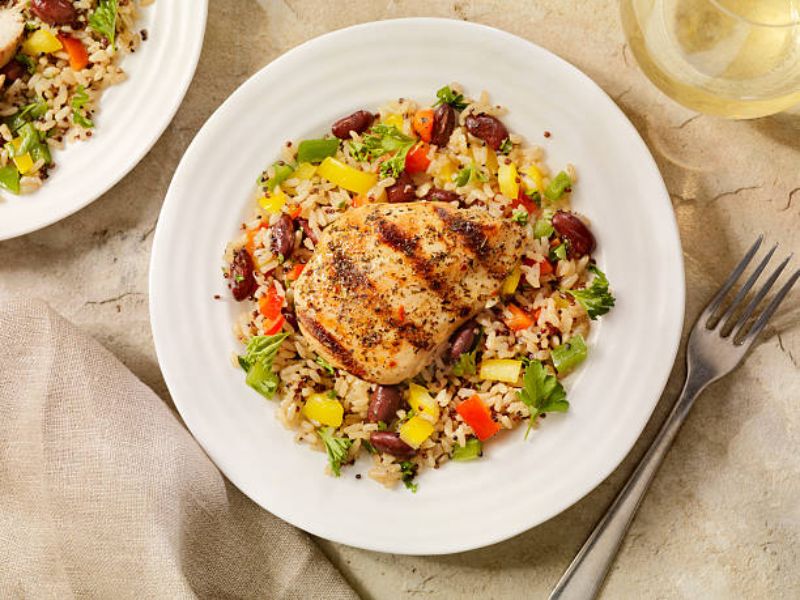
- Grilled chicken or paneer (cottage cheese) with brown rice: Pairing lean protein with complex carbohydrates like brown rice helps replenish glycogen stores and support muscle recovery.
- Dal (lentils) with quinoa or whole grain roti (flatbread): Dal is a good source of protein, and when combined with quinoa or whole grain roti, it provides a balanced post-workout meal.
- Vegetable stir-fry with tofu: Tofu is rich in protein and can be stir-fried with a variety of vegetables like bell peppers, broccoli, and carrots for a nutritious post-workout option.
- Egg bhurji (scrambled eggs) with multigrain bread: Eggs are a complete protein source and can be enjoyed as bhurji with whole grain bread for a satisfying post-workout meal.
- Chickpea salad with sweet potatoes: Chickpeas are high in protein and fiber, while sweet potatoes provide complex carbohydrates and essential nutrients for recovery.
Common Dietary Mistakes to Avoid
Building muscle and losing fat simultaneously requires some strategic planning on your plate.
Here are some common roadblocks and how to avoid them:
A. Sneaky Saboteurs: Disguised Diet Destroyers
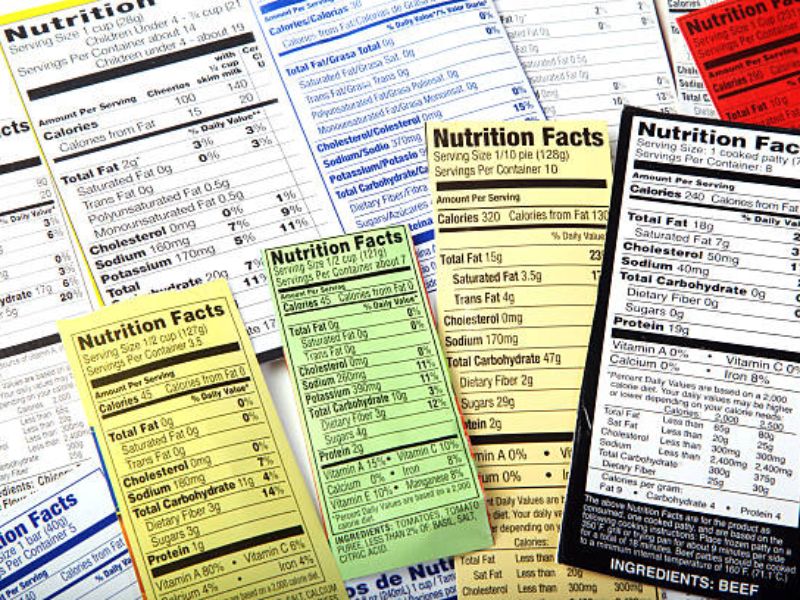
Diet Trap #1: “Healthy” Doesn’t Always Mean Muscle-Friendly: Just because something is labeled “healthy” doesn’t mean it’s ideal for your goals. Granola bars might be packed with fiber, but they can also be loaded with sugar and unhealthy fats.
Solution: Read food labels carefully! Focus on whole, unprocessed foods whenever possible.
Diet Trap #2: Fear of Fat: Fat isn’t the enemy! Healthy fats from nuts, seeds, avocados, and olive oil are essential for hormone function, keeping you feeling full, and even muscle building.
Solution: Include healthy fats in moderation as part of your balanced meals.
Diet Trap #3: Juice Cleanse Craze: Juice cleanses might seem trendy, but they deprive your body of essential nutrients and protein needed for muscle growth.
Solution: Stick to whole fruits and vegetables for a fiber and vitamin boost.
B. Calorie Calamities: Too Much or Too Little Fuel
Calorie Catastrophe #1: Crash Dieting Disaster: Eating way too few calories can lead to muscle loss, fatigue, and uncontrollable cravings.
Solution: Aim for a moderate calorie deficit (around 300-500 calories less than your maintenance level). This helps you lose fat while preserving muscle.
Calorie Catastrophe #2: Overeating Overdrive: Eating too much, even healthy foods, can hinder your progress.
Solution: Be mindful of portion sizes. Use tools like measuring cups or your own hand to estimate appropriate serving sizes.
C. Conquering Cravings and Finding Balance

Craving weakness: We all have them! Cravings can derail your healthy eating plans.
Solution: Plan ahead! Have healthy snacks readily available when cravings strike. Fruits, nuts, or yogurt are great options.
Balance Beam Blues: Feeling overly restrictive can lead to binges.
Solution: Allow yourself occasional treats in moderation. Aim for 80% healthy choices and 20% flexibility. This helps you stay on track without feeling deprived.
Conclusion
By implementing strategic dietary changes, you can indeed build muscle and lose weight simultaneously. It’s a journey that requires patience, consistency, and a willingness to adapt.
Remember, small tweaks to your diet can yield significant results over time. Stay committed, trust the process, and celebrate every milestone along the way to your fitter, stronger self.
